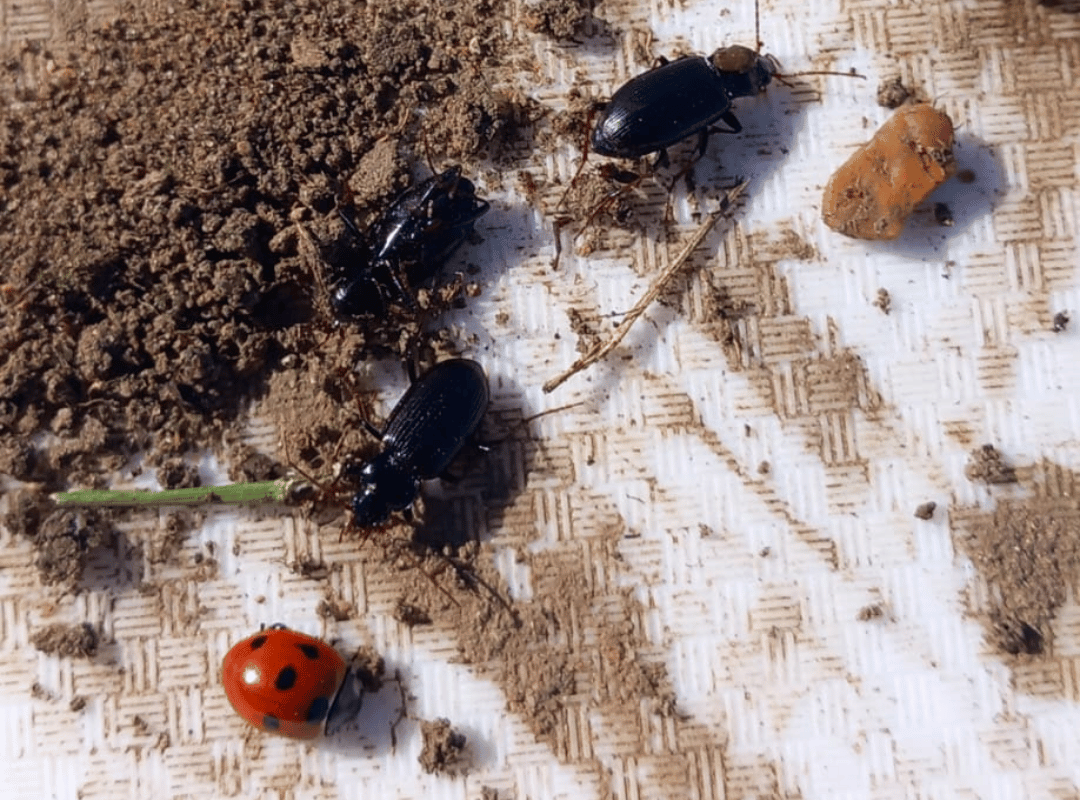What Our Biodiversity Audit at Watatunga Revealed

At Watatunga Wildlife Reserve, we’re passionate about protecting and promoting biodiversity, not just the rare and wonderful animals that we care for, but also the smaller creatures and ecosystems that support a healthy environment. From damselflies to dung beetles, every creature plays a role in this complex web of ecology that makes this reserve so special.
That’s why we recently carried out a biodiversity audit, to better understand the invertebrate populations that can be found throughout Watatunga, including butterflies, dragonflies, spiders and more. The aim? To learn more about how our habitats are functioning and to see how we can manage them to support nature best.
What Did We Study?
Our audit focused on some of nature’s smaller but vital residents including butterflies, dragonflies, reptiles and terrestrial invertebrates. These groups are excellent indicators of environmental health, and changes in their populations can tell us a lot about the condition of the habitats that they live in.
To get a clear picture, we used a mix of surveying methods tailored to each group; from pitfall traps for ground-dwelling insects to refugia traps for any potential reptiles. This allowed us to gather detailed data across a variety of species and habitats. We carried out seasonal monitoring, surveying in spring, summer, and autumn, across eight different habitat parcels within the reserve. These habitats were chosen to represent the range of environments found here at Watatunga.
What Did We Find?
The good news is that Watatunga supports a wide range of invertebrate life! Some areas, however, were richer in species than others:
Wetlands came out on top, showing the highest diversity of species. These watery environments are clearly a haven for a variety of invertebrates and play a crucial role in supporting the wider ecosystem. One such invertebrate found was the Scarce Chaser Dragonfly, a red listed species, which was the first to be recorded on Watatunga!
Our woodlands also showed a remarkable balance in species, meaning no one type dominated. We also found the most millipedes within this habitat, which play a key role in healthy soil and plant growth- great news for the grazing animals at Watatunga!
On the other end of the spectrum, butterflies across the UK struggled in 2024 due to poor weather, and Watatunga was no exception, we only recorded eight species. But we’re optimistic that better weather in future years, along with our improved habitat management, will bring more butterflies back to Watatunga.
We also only spotted one Grass Snake during our surveys, likely because their population is small. Interestingly, this may not be a bad thing: grass snakes eat amphibians and birds, so low numbers help to protect some species we’re working to conserve.

What Can We Do Better?
This Biodiversity audit was used to identify areas where Watatunga can improve. Our findings help guide us toward simple but effective improvements that can make a real difference to local biodiversity.
The modified grasslands, particularly the Clover and Sainfoin patches, showed the lowest levels of biodiversity. To help turn this around, we’ll be adjusting how and when we mow these areas. Instead of multiple cuts, we’ll mow just once a year, timing it carefully for the benefit of both wildlife and plants. The cut will take place in late spring to early summer, when plants are in early to mid-bloom. This approach supports pollinators and reduces the risk of harming insects and ground-nesting birds, while also preventing plant damage from late-season mowing.
Another key improvement will be increasing plant variety by introducing more native wildflowers, which offer essential food and shelter for butterflies and other pollinators. In addition, we’ll be planting grass species like Juncus, which not only support a wide range of invertebrates but also provide valuable cover for some of Watatunga’s larger residents. Our Eurasian cranes, for example, prefer to nest in tall, dense vegetation, so these changes could directly support their breeding success as well.
Why This Matters
The animals at Watatunga live on the reserve year-round, so caring for the land itself is just as important as caring for the species it supports. Invertebrates are the foundation of a healthy ecosystem, playing a vital role in nutrient cycling, pollination, and the food chain. By improving conditions for these small but essential creatures, we also boost the wellbeing of the birds, amphibians, and larger animals, both wild and captive, that call Watatunga home.
This audit is just one step in our ongoing mission to make Watatunga a sanctuary not only for rare and endangered species, but for the full web of life that makes our reserve so special.
Stay tuned for updates on how we’re putting these recommendations into action and come see the difference for yourself! Book a Tour Here
